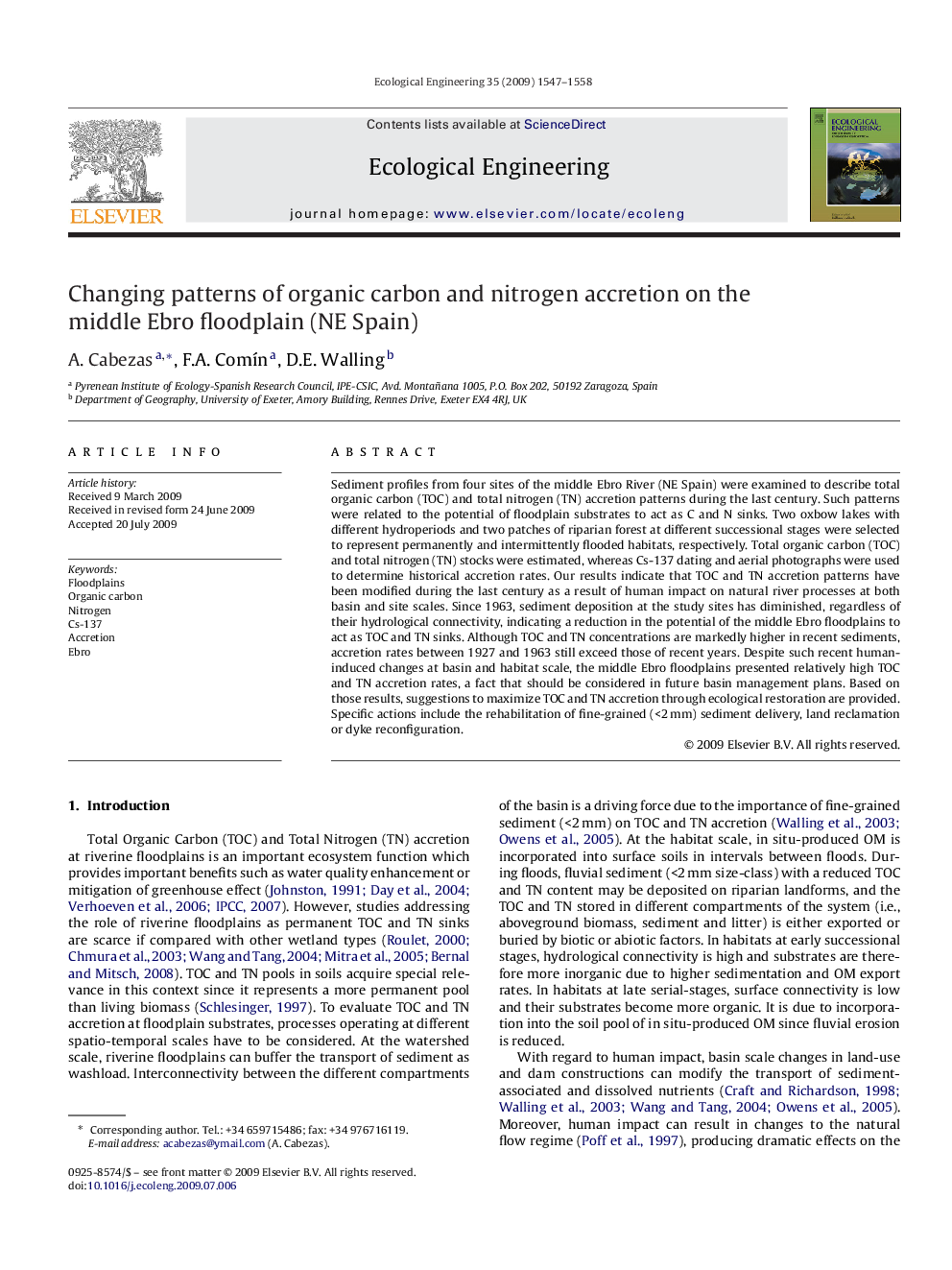| Article ID | Journal | Published Year | Pages | File Type |
|---|---|---|---|---|
| 4390733 | Ecological Engineering | 2009 | 12 Pages |
Abstract
Sediment profiles from four sites of the middle Ebro River (NE Spain) were examined to describe total organic carbon (TOC) and total nitrogen (TN) accretion patterns during the last century. Such patterns were related to the potential of floodplain substrates to act as C and N sinks. Two oxbow lakes with different hydroperiods and two patches of riparian forest at different successional stages were selected to represent permanently and intermittently flooded habitats, respectively. Total organic carbon (TOC) and total nitrogen (TN) stocks were estimated, whereas Cs-137 dating and aerial photographs were used to determine historical accretion rates. Our results indicate that TOC and TN accretion patterns have been modified during the last century as a result of human impact on natural river processes at both basin and site scales. Since 1963, sediment deposition at the study sites has diminished, regardless of their hydrological connectivity, indicating a reduction in the potential of the middle Ebro floodplains to act as TOC and TN sinks. Although TOC and TN concentrations are markedly higher in recent sediments, accretion rates between 1927 and 1963 still exceed those of recent years. Despite such recent human-induced changes at basin and habitat scale, the middle Ebro floodplains presented relatively high TOC and TN accretion rates, a fact that should be considered in future basin management plans. Based on those results, suggestions to maximize TOC and TN accretion through ecological restoration are provided. Specific actions include the rehabilitation of fine-grained (<2Â mm) sediment delivery, land reclamation or dyke reconfiguration.
Related Topics
Life Sciences
Agricultural and Biological Sciences
Ecology, Evolution, Behavior and Systematics
Authors
A. Cabezas, F.A. ComÃn, D.E. Walling,
